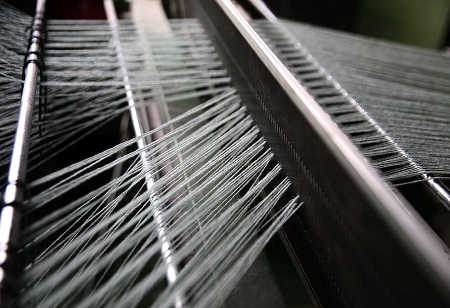
As the fashion industry continues to mature, it is imperative to hit upon ways to diminish the environmental impacts it can potentially have. Sustainable textile manufacturing techniques such as employing recycled materials, optimizing water waste, and introducing renewable energy sources are indispensable for the fashion industry in order to become more environmentally responsible. In addition, fashion brands and retailers must be held accountable for their practices and the waste they generate. Consumers can help by sustaining companies that prioritize sustainability. Consumers should also be aware of their own shopping habits and strive to buy fewer, better-made items that will last a long time. Companies can be encouraged to invest in more sustainable practices. Lastly, government regulation ought to be introduced to make certain that fashion brands and retailers adhere to sustainable manufacturing standards.
Certain ways sustainability can be incorporated in textile manufacturing -
Sustainability in textile manufacturing is changing the looks of fashion industry by dropping the industry's environmental and social impact. This includes reducing the usage of hazardous chemicals, switching to renewable energy sources, and minimizing water and air pollution. Many fashion companies have an unswerving oath to use sustainable materials in their manufacturing processes, such as organic cotton, recycled polyester, and bamboo. They are also effective on reducing their waste and energy consumption. Furthermore they are looking for ways to lessen their carbon footprint by using renewable energy sources and investing in more competent production processes. To further demonstrate their commitment to sustainability, diverse fashion companies have invested in Fair Trade certified factories and are educating their employees on the importance of environmental stewardship. For example, Patagonia has pledged to use 100% renewable energy by 2025 and is currently sourcing 34% of its energy from solar, wind, geothermal, and small-scale hydroelectric sources.
It involves creating more ethical working conditions for employees and utilizing recycled and sustainable materials.Companies are adopting eco friendly approaches to reduce their carbon footprint by introducing energy efficient manufacturing processes and investing in renewable energy sources. They are also encouraging their customers to make more sustainable fashion choices by providing more information about the production process and the environmental impacts of their products. This shift towards sustainability is leading to a more conscious fashion industry that values people and the planet. It is also creating better, longer-lasting clothing that is better for the environment. This shift towards sustainability is leading to a more conscious consumer who is more aware of the impact their purchases have on the environment. This conscious consumer is more likely to purchase clothing made from sustainable materials and produced in ethical working conditions, which has an overall positive effect on the environment. In addition, sustainable materials tend to be more durable, which means that the clothing lasts longer and needs to be replaced less often, further reducing its environmental impact. For example, organic cotton is a much more sustainable material than conventional cotton since it does not require the use of pesticides and fertilizers, resulting in less water and energy consumption and a lower carbon foot print.
Companies are taking steps to make their products more accessible and affordable for people of all incomes. This is a win-win situation for both the companies and the consumers. They are able to reduce their environmental impact, while consumers can purchase clothing that is both of top notch quality and reasonable. It is a huge way to promote sustainability and trim down waste. These changes are helping to create a more sustainable fashion industry that benefits us all. As said by Ric Kostick, co-founder 100% Pure – “With every purchase, try to be more mindful.Educate yourself. Read the ingredient list, read the brand story. Ask yourself, where is my money going?” They are also investing in research and development to create innovative products that are both eco-friendly and stylish. This shift is helping to reduce waste and conserve resources; the use of these sustainable materials not only helps ease the environmental impact of fashion production but also reduces the company's costs in the long run. Consequently,companies are now adopting measures to cut down their water and energy consumption in the production process.This makes their operations more proficient, further reducing their carbon footprint. For instance, many companies are investing in sustainable cotton farming practices that reduce water, land, and energy use while also increasing yields.
Ultimately, textile manufacturing companies should prioritize ethical labor practices over conventional ones.Furthermore, they should strive to reduce the amount of waste generated during production and create a plan for the responsible disposal or reuse of materials. They should also strive to source materials from sustainable sources whenever possible by recycling and reusing. They should prioritize investing in renewable energy sources to power their operations and commit to carbon neutrality. They are to assess their environmental impact and develop strategies by investing in carbon offset projects.
We use cookies to ensure you get the best experience on our website. Read more...